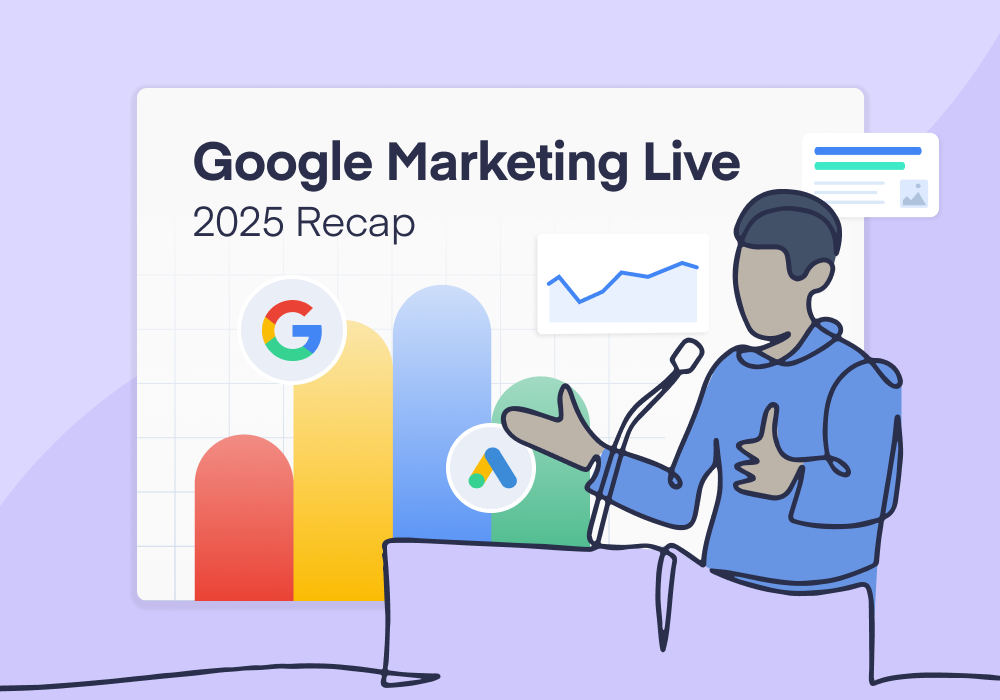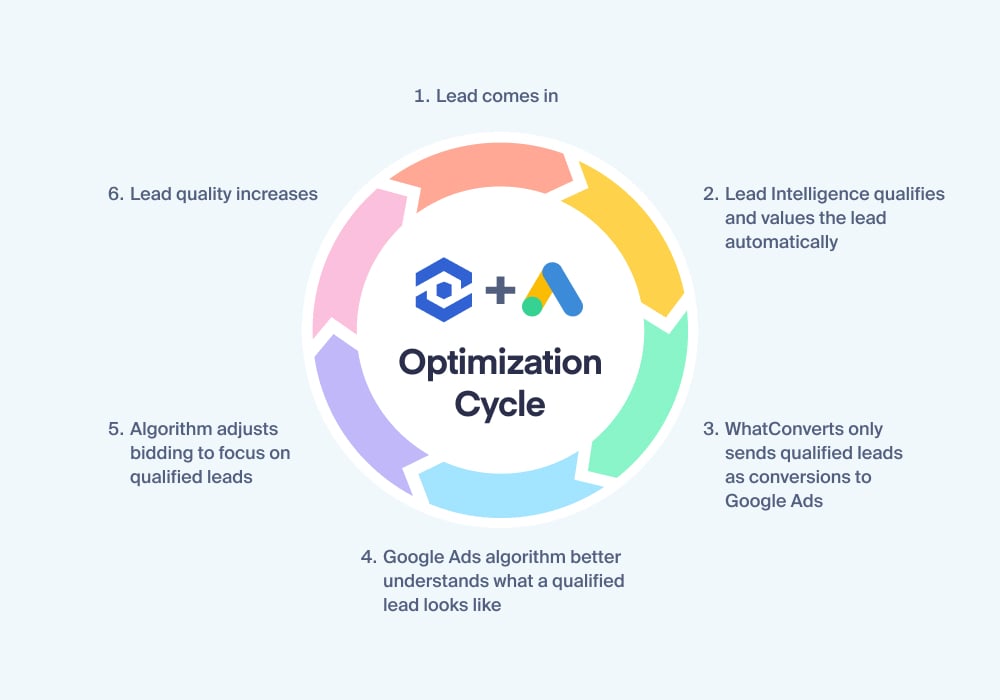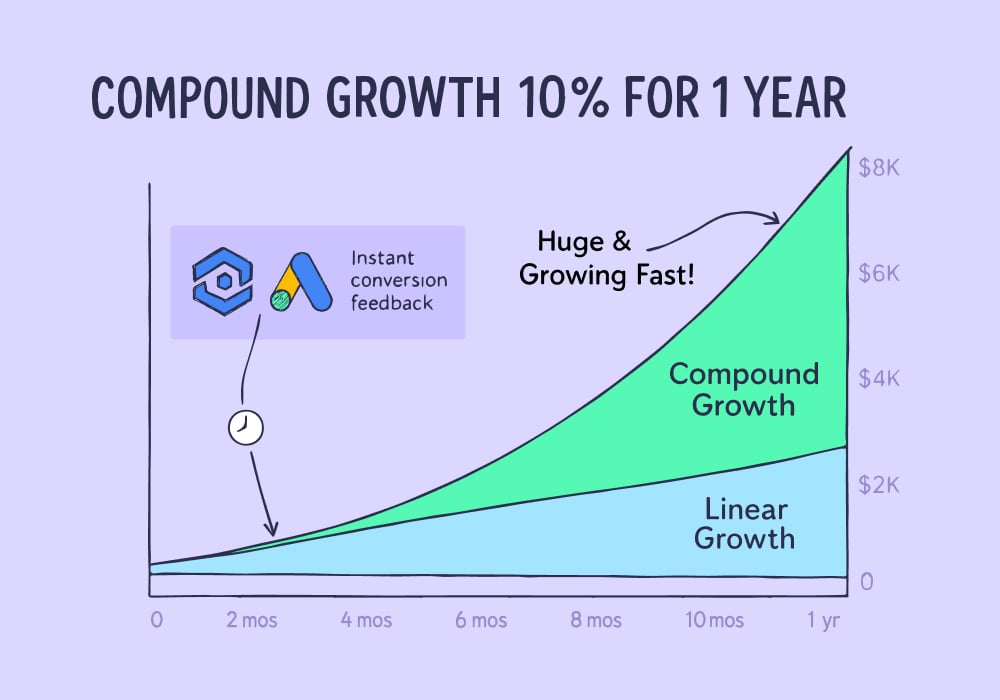
Ads in AI Overviews. The debut of AI Max. A rapidly expanding AI Mode. If GML 2025 proved anything, it’s that Google is all-in on artificial intelligence for search marketing. But here’s the human headline: your real competition isn’t AI—it’s the marketers who started using it last year.
So, how should you start using it?
This recap distills the GML announcements that actually move the ROI needle—and shows how unified lead tracking enhances the earning power of Google's AI.
The Pace of AI Innovation is Unprecedented – And It's Not Slowing Down
"Advertising has seen some big changes. But what we're experiencing right now, it's unprecedented. The future of advertising isn't coming, it's here". This sentiment, expressed at the GML 2025 Pre-Show, set the stage for an event packed with "game-changing innovations". AI is integrated across everything in Google Ads, from targeting and creative to bidding and now, with new agentic experiences.
As John Nicoletti, VP of Google Customer Solutions, put it:
"Last year we said that you're not competing against AI, you're competing against those already using it, and that is more true day by day, by day."
Not taking action means missing out. The core message is clear: AI is the future of search marketing.
The Evolution of Search: From Keywords to Predicting Intent
Google Search is moving "from information to intelligence". With over 5 trillion searches annually, it's already a discovery powerhouse. Now, AI is revolutionizing how users interact with Search and how advertisers can show up.
Here are the major highlights for Search.
Ads in AI Overviews
People love AI Overviews. Overviews allow for more complex, conversational searches—where AI understands not just what users are asking, but why they’re asking. Now, Google is placing ads directly within AI Overviews giving advertisers a new space to reach potential customers.
That’s a big deal. AI Overviews have exploded in popularity, with pageviews on websites ranking for AI Overview keywords growing 22% year-over-year. With ads now embedded in these results, searchers can get answers and be guided to the next step in their journey (i.e., your product or service).
Here’s what that looks like:

What This Means for Advertisers: With this change, Google enables a complete micro customer journey—entirely within the search experience. For example, a user searching how to repair a sink might now get an AI-generated answer, learn what to consider before hiring help, and immediately see relevant local contractors—all without leaving Google. For advertisers, this means your brand can now show up not just when someone clicks, but when they’re learning, comparing, and deciding.
Multimodal Understanding Expands How People Search
Google is no longer just processing typed queries—it’s now interpreting voice, images, video, and even combinations of these in a single search. This multimodal understanding allows users to point their camera at a product, ask a follow-up question out loud, or search using a mix of visuals and text.
That’s a seismic shift. Instead of keywords alone, Google’s AI interprets context, tone, and visual cues. This opens the door to new entry points across the customer journey, especially on mobile and visual platforms like YouTube and Google Lens.
AI Mode is what brings all these inputs together. Here’s what that experience might look like:
- Step 1: Visual Input
- The user opens Google on mobile in AI Mode and takes a photo of a broken faucet handle using Google Lens.
- Step 2: Text or Voice Layer
- They then ask via voice or text: “How do I fix this?”
- Step 3: Multimodal Processing
- Google’s AI combines:
- The image (identifying it as a Moen bathroom faucet handle)
- The voice/text query (understanding intent: repair guidance)
- And possibly location context (for nearby help or store availability).
- Google’s AI combines:
- Step 4: AI Overview Result
- The AI Mode interface generates a custom answer:
- A step-by-step guide to replacing the handle
- A suggested list of compatible replacement parts
- YouTube video previews showing how to do the fix
- Local plumber ads or Home Depot product listings right in the overview
- The AI Mode interface generates a custom answer:
What This Means for Advertisers: To stay visible, brands need to meet users where and how they search. That means investing in high-quality images, engaging product videos, and well-labeled visual assets. When a customer takes a photo of a broken part or records a question about a service, Google may surface your business. Multimodal means more moments to appear—and more chances to convert.
The Shift from Keyword Matching to Intent Prediction
Forget exact match keywords. Today’s search is powered by intent.
Instead of looking for word-for-word matches, Google’s AI now predicts what users mean—even if they type a vague question, speak in natural language, or search using an image. It analyzes signals like query context, user behavior, and content relevance to determine which ads are most useful in the moment. This shift from keyword matching to AI-driven prediction changes how marketers need to think about targeting and optimization.
Resource: The Death of the Keyword and the New Era of Data-Driven Marketing
That’s where AI Max for Search Campaigns comes in. Rather than being a new campaign type, AI Max enhances your existing Search campaigns. It learns from your site, your ads, and your existing keywords to deeply understand what you offer,and when it's relevant to a searcher.
The results are striking. Early beta testers saw a median 27% increase in conversions at a comparable CPA or ROAS. This was possible thanks to AI Max generating custom headlines and matching ads to high-intent searches that traditional keyword targeting would miss.
For more on AI Max, check out this video explainer:
What This Means for Advertisers: Manual keyword management alone won’t cut it. As AI interprets more nuanced queries—including images and natural language—advertisers must rely on tools like AI Max to scale intelligently. It’s a one-click upgrade that helps you show up when intent is highest, even if your exact keyword isn’t used. And with new reporting tools, you’ll see exactly what queries your ads matched with, bringing transparency to AI-driven optimization.
The AI-Powered Campaign "Power Pack"
To maximize performance across Google's ecosystem, Google presented the "Power Pack": Performance Max (PMax), AI Max for Search Campaigns, and Demand Gen.
- Performance Max (PMax): Continues to offer access to Google's full range of channels. Google highlighted Channel Performance Reporting (available now) and full Search Terms Report with negative keywords (coming soon) as key wins for advertisers seeking more transparency and control. A particularly exciting new feature, accessible only via PMax for now, is Video Assets in Search and Shopping (coming soon). This allows videos (especially how-tos, tutorials, or testimonials) to appear directly within Search and Shopping results, making ads more visual and engaging. Reporting on these videos will be available in channel performance reports.
- Demand Gen: Remains the primary tool for prospecting across visual surfaces like Search and YouTube. Updates include new customer acquisition goals, Maps targeting, and accelerated checkout features.
These campaigns aim to deliver better performance while addressing advertisers' feedback on transparency and control.
AI Takes Action: The Rise of Agentic Experiences
One of the most potentially transformative announcements from GML 2025 is the introduction of agentic experiences. Moving beyond predictive or generative AI, these are proactive AI tools designed to take action on your behalf.
Google introduced three types: your Google Ads expert, your Google Analytics expert (both in global beta, rolling out now), and your marketing advisor (coming soon). As demonstrated in a demo, these agents can proactively identify problems, like a missing Google Tag on your website preventing conversion tracking, and offer to fix it with a single click, even integrating directly with platforms like Wix.
This "absolutely game-changing" capability highlights Google's effort to make complex tasks easier, especially for businesses without dedicated technical teams. While promising, it's wise to approach with cautious optimism, understanding that the AI's effectiveness will depend on its training and your guidance.
Google: Google Introduces Agentic Capabilities for Marketers
The Missing Piece: Google Still Can’t See Which Leads Matter

But one core problem remains unsolved: Google still can’t see which leads actually matter to your business.
It knows who clicked your ad. It might even know they filled out a form. But it doesn’t know if that lead was qualified or if they ever became a paying customer. And without that knowledge, even the most advanced AI models are flying blind.
That’s where first-party data comes in. When you can show Google which leads were valuable (and how valuable they were), its automated systems can start recognizing the patterns—audience signals, behaviors, search contexts—that correlate with high-quality outcomes. The result? Smarter targeting, less wasted spend, and better overall performance.
This is exactly where WhatConverts makes the biggest impact. It gives marketers full visibility into every lead’s quality and value, tracking the entire customer journey, capturing call recordings and transcriptions, surfacing contact details, applying AI-powered qualification, and assigning revenue to leads. More importantly, it allows you to send only qualified leads back to Google Ads as conversions.
That means:
- You don’t train Google on every form fill. You train it on real outcomes.
- You’re not optimizing for volume. You’re optimizing for value.
- And because this data is sent back automatically and continuously, Google learns and adapts faster.
The bottom line: Google’s tools are more powerful than ever. But your success still depends on the data you feed them. The marketers who win in this new era won’t just be the ones using AI. They’ll be the ones teaching it what a great lead looks like.

Conclusion: AI Is the Engine—Your Data Is the Fuel
Google Marketing Live 2025 made one thing clear: AI is transforming search and advertising, making campaigns more automated, intelligent, and efficient.
But even the smartest AI has a blind spot: it still can’t see which leads truly matter.
That’s your advantage. When you feed Google first-party data that shows which leads became customers (and how valuable they were), its systems get smarter. It learns what good outcomes look like and starts targeting more of them.
WhatConverts gives you the data and functionality to do exactly that. By tracking lead quality and value, then sending only qualified conversions back to Google, you help its AI optimize toward results that grow your business. So if you're ready to amplify the earning power of Google's new AI upgrades, start your free WhatConverts trial today.
Get a FREE presentation of WhatConverts
One of our marketing experts will give you a full presentation of how WhatConverts can help you grow your business.
Schedule a Demo
Grow your business with WhatConverts





